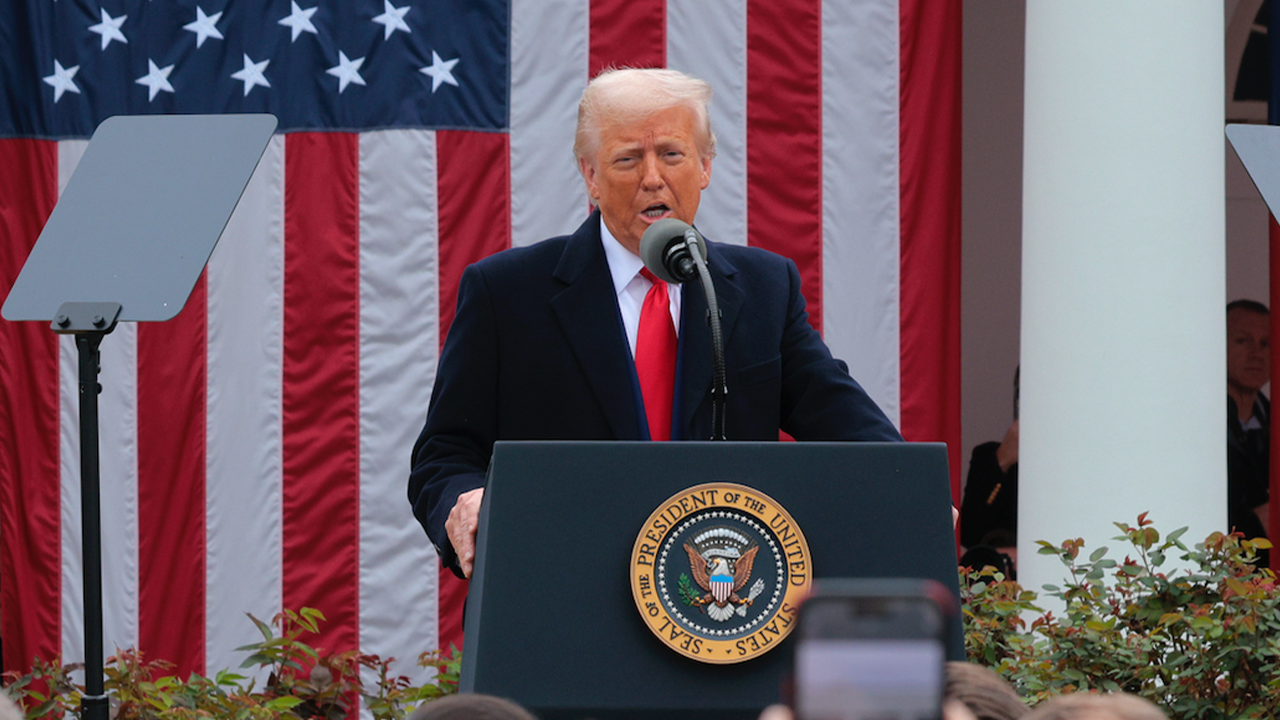Trump's Tariffs: Delivering the American Dream or a Trade War Nightmare?
Editor's Note: The ongoing impact of Trump-era tariffs continues to be a hotly debated topic. This article examines the promises, realities, and future implications of this controversial trade policy.
1. Introduction:
Donald Trump's presidency was marked by a dramatic shift in US trade policy, characterized by the imposition of significant tariffs on goods imported from China and other countries. The stated goal? To revitalize American manufacturing, protect American jobs, and ultimately, deliver the "American Dream" of economic prosperity. But have these tariffs achieved their intended goals, or have they instead triggered a costly trade war with unintended consequences? This article delves into the complex economic landscape shaped by these tariffs, examining both the promised benefits and the harsh realities.
2. Why This Topic Matters:
The impact of Trump's tariffs extends far beyond the immediate economic consequences. They have significantly influenced global trade relations, sparked retaliatory measures from other nations, and fueled ongoing debates about the role of government intervention in the economy. Understanding the effects of these tariffs is crucial for comprehending current global economic trends and predicting future economic stability. This analysis explores the winners and losers of this trade policy, examining its effects on various sectors, from agriculture to manufacturing, and considering the long-term implications for American consumers and businesses.
3. Key Takeaways:
| Promise | Reality |
|---|---|
| Increased Domestic Production | Mixed results; some sectors benefited, others suffered. |
| Job Creation | Limited evidence of significant job creation directly attributable to tariffs. |
| Reduced Trade Deficit | Initial reductions, followed by increased deficits in some areas. |
| Stronger Economy | Contributed to economic uncertainty and inflationary pressures. |
4. Main Content:
4.1 Trump's Tariffs: The Initial Promise
Trump's tariff strategy was built on the premise that imposing tariffs on imported goods would level the playing field for American businesses, encourage domestic production, and create jobs. The administration argued that unfair trade practices by countries like China had decimated American industries, and tariffs were necessary to counteract these practices. This narrative resonated with a segment of the population who felt left behind by globalization.
4.2 Key Aspects of the Tariff Policy:
- Section 301 Tariffs: These tariffs, primarily targeting China, focused on intellectual property theft and forced technology transfer.
- Steel and Aluminum Tariffs: These tariffs, applied to a range of countries, aimed to protect the domestic steel and aluminum industries.
- Retaliatory Tariffs: Other countries responded to US tariffs with their own retaliatory measures, escalating the trade conflict.
4.3 Detailed Analysis: Winners and Losers
While some sectors, particularly steel and aluminum producers, experienced short-term gains, many others suffered. Farmers, for example, faced retaliatory tariffs from China, leading to significant losses. Consumers also bore the brunt of higher prices on imported goods. The overall economic impact was complex and varied across industries and regions.
4.2 Interactive Elements on Trump's Tariffs:
The impact of tariffs isn't static; it's a dynamic process influenced by various factors. Interactive tools like trade data visualizations can help illustrate the fluctuating effects of tariffs on different sectors and countries. Exploring these tools provides a more nuanced understanding of the complexities involved.
4.3 Advanced Insights on Trump's Tariffs
Economic models and expert opinions vary widely on the long-term effects of these tariffs. Some argue that the initial gains were temporary and ultimately outweighed by the negative consequences. Others maintain that the tariffs were a necessary step towards rebalancing trade relationships. Further research is needed to determine the lasting impact on the American economy and its global standing.
5. People Also Ask (NLP-Friendly Answers):
Q1: What is the impact of Trump's tariffs on the American economy? A: The impact is complex and multifaceted, with some sectors benefiting while others suffered significant losses. The overall effect has been debated, with some arguing negative consequences outweigh any gains.
Q2: Why did Trump impose tariffs? A: Trump's administration argued that tariffs were necessary to protect American industries from unfair trade practices, particularly from China, and to create jobs.
Q3: How did other countries respond to Trump's tariffs? A: Many countries responded with their own retaliatory tariffs, escalating the trade conflict and creating uncertainty in the global economy.
Q4: What are the long-term effects of Trump's tariffs? A: The long-term effects are still uncertain and are subject to ongoing debate and research.
Q5: Are Trump's tariffs still in effect? A: Some tariffs remain in place, while others have been modified or removed. The current state of tariffs is subject to ongoing policy changes.
6. Practical Tips for Understanding Trump's Tariffs:
- Consult reputable economic data sources: Analyze data from organizations like the World Bank and the Congressional Research Service.
- Read expert analyses: Seek out well-researched articles and reports from economists and trade specialists.
- Consider diverse perspectives: Be aware of different viewpoints and biases when examining the impact of tariffs.
- Understand the interconnectedness of global trade: Recognize that trade policies have ripple effects across numerous sectors and countries.
- Follow current trade policy developments: Stay informed about ongoing changes in trade regulations and their potential consequences.
7. Summary:
Trump's tariffs represented a significant shift in US trade policy, aimed at revitalizing American manufacturing and creating jobs. While some sectors experienced short-term benefits, the overall impact has been complex and debated. The long-term consequences remain uncertain, highlighting the intricate nature of global trade and the challenges of implementing protectionist measures.
8. Call to Action:
Ready to delve deeper into the complexities of international trade and the legacy of Trump's tariffs? Subscribe to our newsletter for more in-depth analysis and expert insights!

